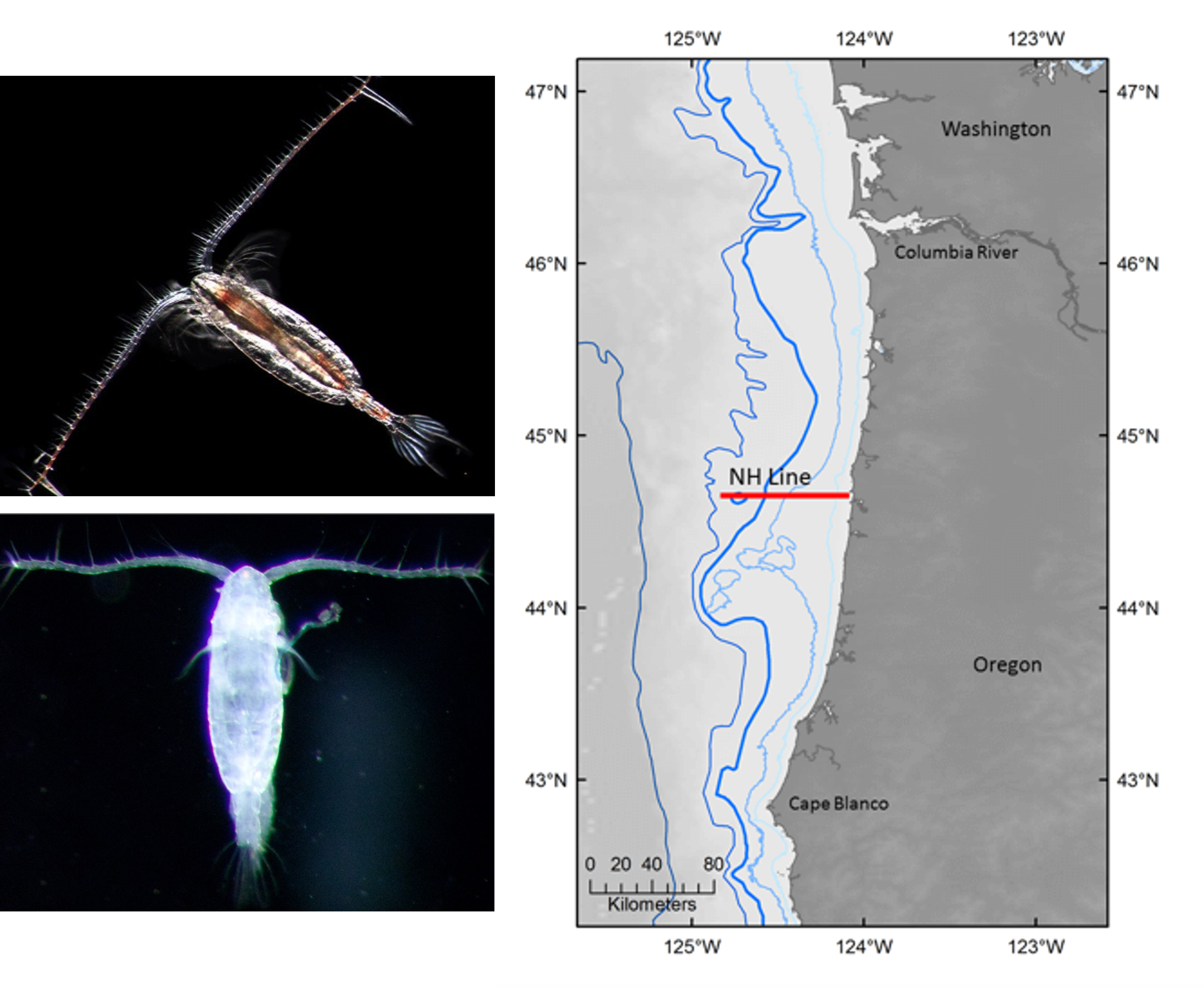
Copepod populations
Changes in copepod populations in the Northern California Current Ecosystem reflect shifts in ocean temperatures and circulation patterns.
Copepods are a small and diverse group of marine crustaceans that eat bacteria and algae. They are a crucial food source for a wide range of animals, from fish like anchovies and tuna, to whales and seabirds. Because copepods drift with ocean currents, they are reliable indicators of the source of water masses present in the California Current. Warm subtropical water masses from the south carry a larger number of copepod species compared to cold northern water masses; the number of species in a water sample is reported as “species richness.” For more information, download the Copepod Populations chapter.
Two main copepod groups are found in the California Current. The northern copepods like Calanus marshallae (top left) have higher fat content and biomass than southern copepods like Acartia tonsa (bottom left). Copepod samples are collected off the Oregon coast (about 190 miles north of Crescent City, California) (“NH Line” on map, right). Changes in this northern part of the California Current, which flows along the North American west coast, are indicative of changes along the California coast.
Credit: NOAA and NSF
What does the indicator show?
Copepod populations in the northern California Current System
This graph presents copepod species richness (the average number of species) in samples collected off the coast of Oregon for each month relative to the long-term average. Each value represents the monthly anomaly, or the difference between the monthly average and the long-term monthly average of copepod species richness. Red bars mean more species than average, while blue bars indicate fewer species.
Source: NOAA
- Copepod species richness has fluctuated over the past 25 years. Numbers were highest from 2015 to mid-2018, then returned to low levels in 2020 and 2021.
- The higher values indicate that copepods were transported mainly from warm southern waters, and the lower values, from colder northern waters. Although northern waters carry fewer species, these copepods have higher biomass and thus create better feeding conditions.
Why is this indicator important?
- Copepod populations are useful for tracking physical conditions in the marine environment, notably ocean transport processes and seasonable wind patterns.
- Because copepods fuel the marine food chain, changes in their populations in the California Current can signal potential impacts on the animals that rely on them for food. For example, the number of salmon returning to California and Oregon rivers declined after years when southern copepod species were dominant.
What factors influence this indicator?
- Copepod species richness in the California Current changes with the season and is influenced by local winds and currents. From May to September, cold-water copepods dominate as waters from the Gulf of Alaska are transported southward into the California Current, while winter brings warmer waters carrying more copepod species from the south.
- Year-to-year variability in copepod species track fluctuations in sea surface temperatures. In 2013, a mass of warm water called "the Blob" caused a marine heat wave in the California Current, leading to a copepod community dominated by warm-water species and unfavorable feeding conditions for fish.
Additional Resources
- National Oceanic and Atmospheric Administration Northwest Fisheries Science Center. Ocean Ecosystem Indicators of Pacific Salmon Marine Survival in the Northern California Current
- National Oceanic and Atmospheric Administration, California Current Integrated Environmental Ecosystem Assessment Indicators

